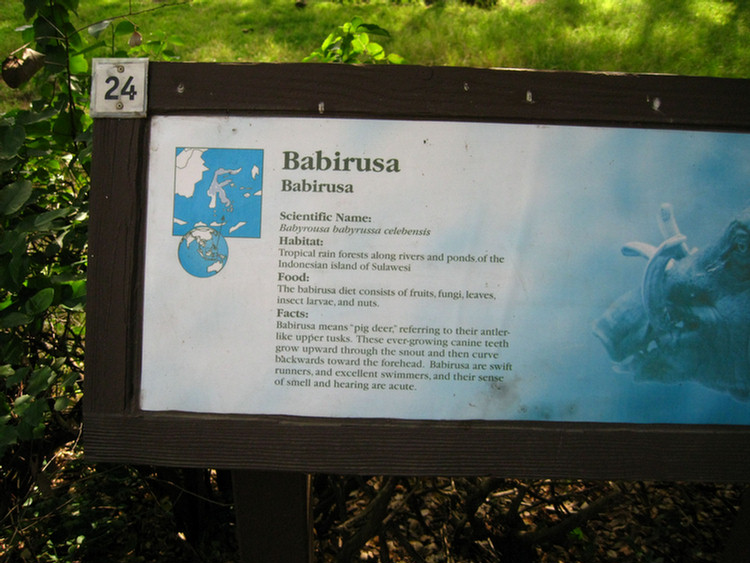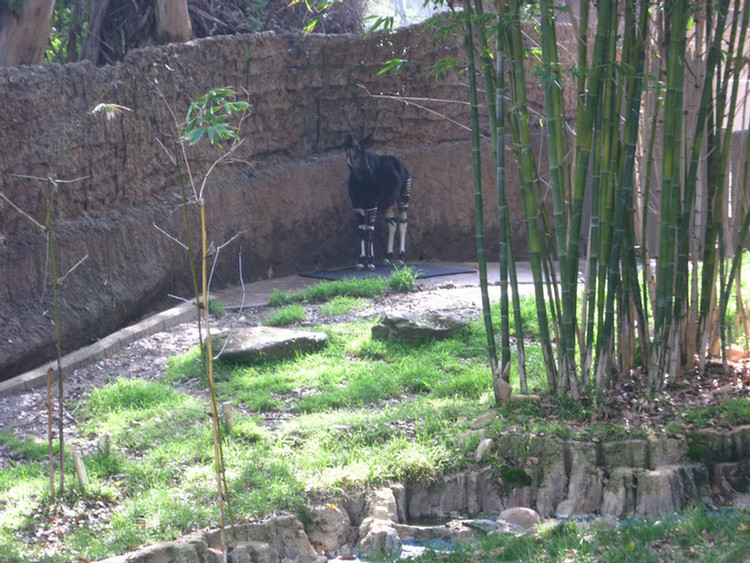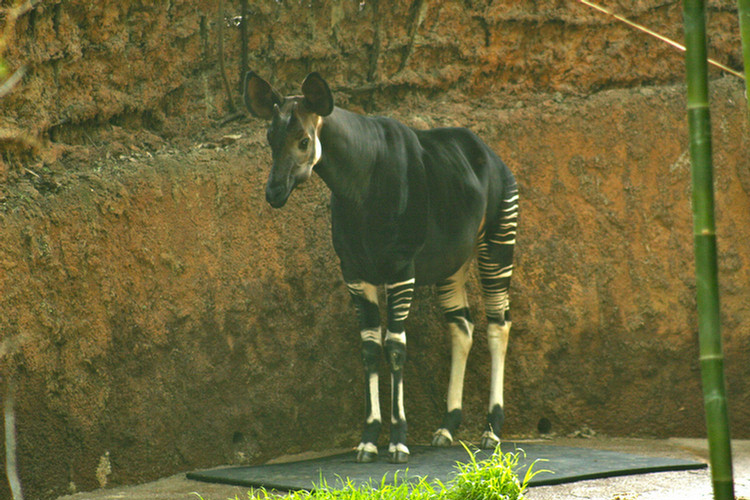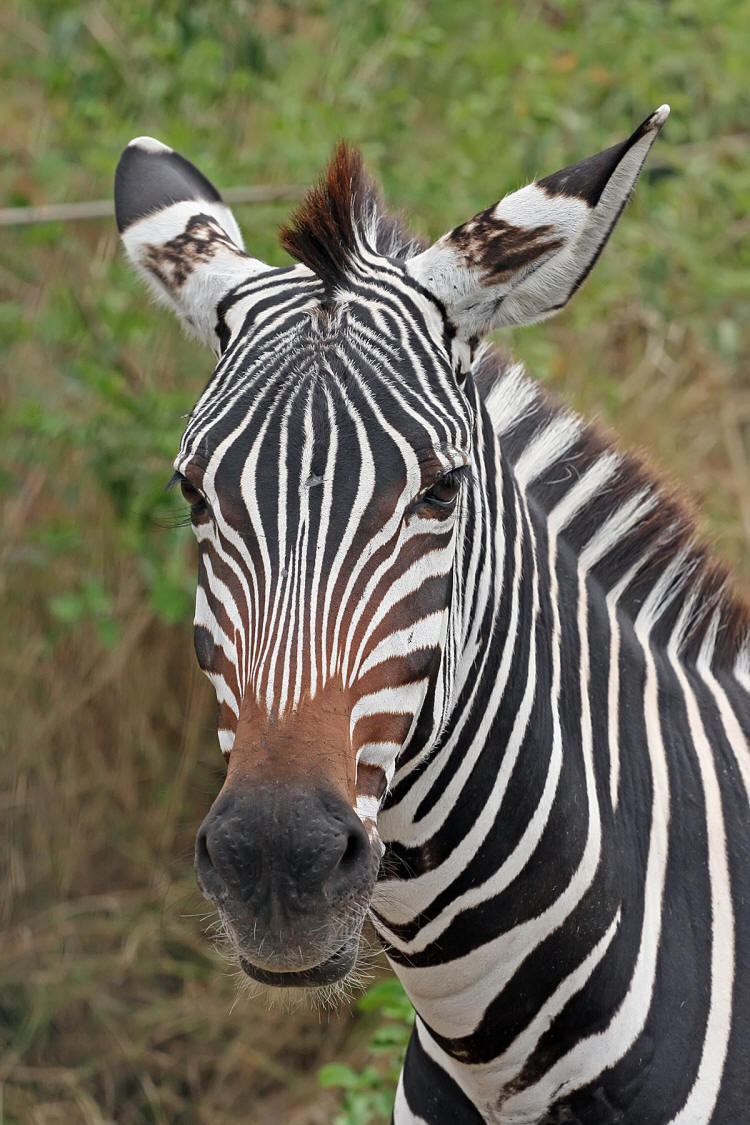A Visit To The LA Zoo February 2010 (Page One)
Page One | Page Two | Page Three
Did you know? - The zoo, located in Los Angeles' Griffith Park, is home to 1,100 animals from around the world. The first zoo opened in 1912 and was about two miles (3 km) north of its current site until about 1965. Remnants of the zoo remain and were used in the film Anchorman: The Legend of Ron Burgundy. The site of the current zoo was formerly the location of Rodger Young Village, which was itself built on the land which had been used for the Griffith Park Aerodrome.
It has been successful in its breeding program of the rare California Condor, helping to grow the number of condors in the world from a low of 22 in the 1980s to over 330 today. It is one of the few zoos worldwide to contain Mountain Tapir.
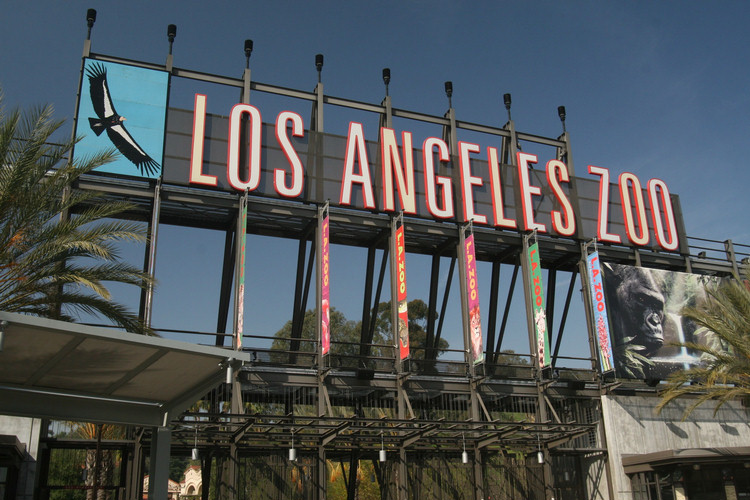
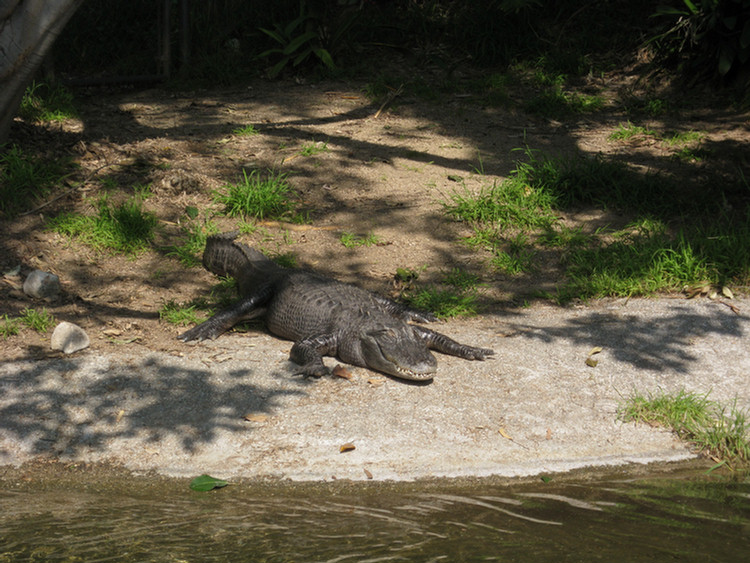
Meet Reggie The alligator
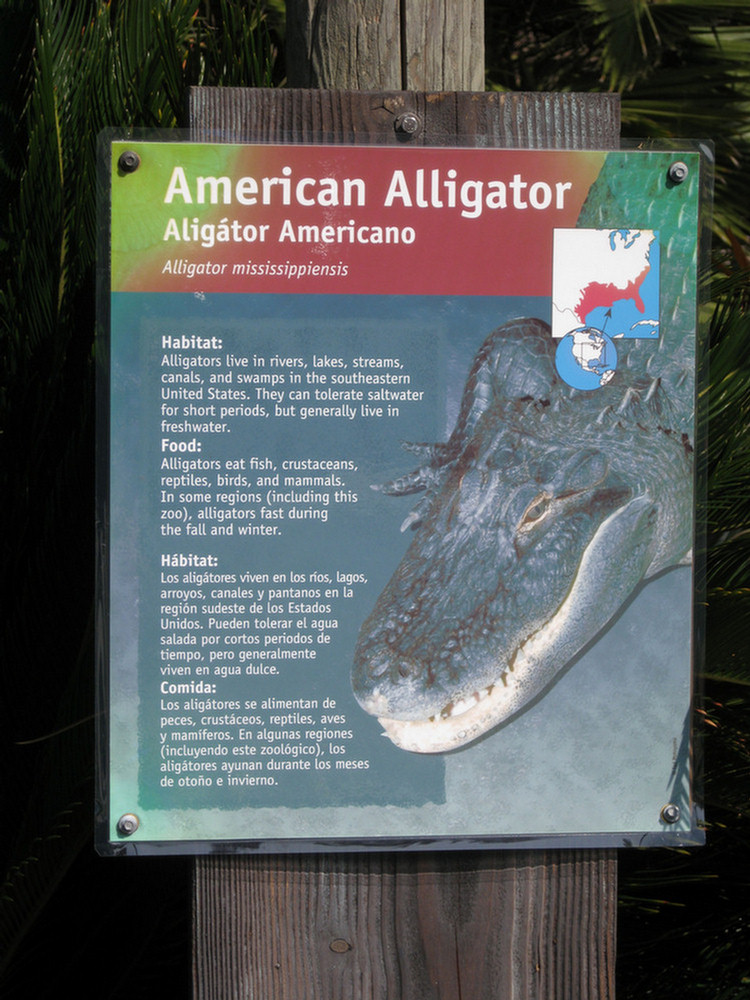
Did you know? - Reggie was first seen swimming in Machado Lake at Harbor City, California's Kenneth Malloy Memorial Park in August 2005. He became a media sensation shortly thereafter, receiving coverage as far away as Europe, and eventually inspiring a website, a line of merchandise, and even becoming the official mascot for nearby Los Angeles Harbor College.
Two men from San Pedro, California suspected of illegally raising exotic animals were arrested in August 2005 in connection with releasing Reggie into the lake.
City officials immediately set efforts in motion to apprehend him. The entire 53-acre (210,000 m2) lake was cordoned off and several professional "gator wranglers" were hired. But despite a nearly three month-long effort, Reggie managed to elude capture and began making fewer and fewer appearances until he seemed to disappear altogether. Until May of 2007, Reggie was believed to be either in hibernation, or dead. "Crocodile Hunter" Steve Irwin pledged that if the gator ever re-emerged, he and his crew would go to the lake and attempt a capture.
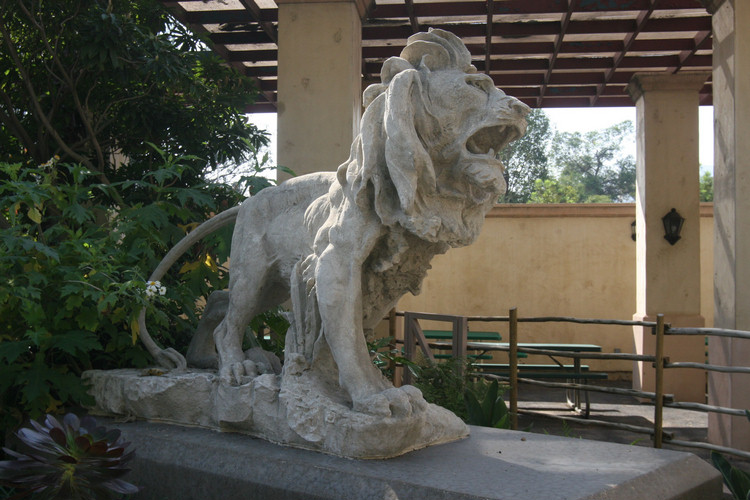

The entrance to the Zoo
Did You Know? - A zoological garden, zoological park, menagerie, or zoo is a facility in which animals are confined within enclosures, displayed to the public, and in which they may also be bred.
The term zoological garden refers to zoology, the study of animals, a term deriving from the Greek zωο (Zōo – "animal") and λóγος (lógos – "study"). The abbreviation "zoo" was first used of the London Zoological Gardens, which opened for scientific study in 1828 and to the public in 1847. The number of major animal collections open to the public around the world now exceeds 1,000, around 80 percent of them in cities.
The Meercats Are Cute!
Did You Know? - The meerkat or suricate Suricata suricatta, a small mammal, is a member of the mongoose family. Meerkats live in all parts of the Kalahari Desert in Botswana and in South Africa. A group of meerkats is called a "mob", "gang" or "clan". A meerkat clan often contains about 20 meerkats, but some superfamilies have 50 or more members. Meerkats have an average life span of 12-14 years.



Did You Know? - According to African popular belief (mainly in the Zambian/Zimbabwean region), the meerkat is also known as the sun angel, as it protects villages from the moon devil or the werewolf which is believed to attack stray cattle or lone tribesmen.


Did you know? - Meerkats are primarily insectivores, but also eat lizards, snakes, scorpions, spiders, plants, eggs, small mammals, millipedes, centipedes and, more rarely, small birds. They are partially immune to certain venoms; they are immune to the very strong venom of the scorpions of the Kalahari Desert, unlike humans.


Did you know? - Meerkats demonstrate altruistic behavior within their colonies; one or more meerkats stand sentry (lookout) while others are foraging or playing, to warn them of approaching dangers. When a predator is spotted, the meerkat performing as sentry gives a warning bark, and other members of the gang will run and hide in one of the many bolt holes they have spread across their territory. The sentry meerkat is the first to reappear from the burrow and search for predators, constantly barking to keep the others underground. If there is no threat, the sentry meerkat stops signaling and the others feel safe to emerge.

Los Angeles Zoo and Botanical Gardens

Did you know? - In 2002, the zoo became a certified Botanical Gardens and the official name of the institution was changed to the Los Angeles Zoo and Botanical Gardens. Spread throughout zoo grounds, there are 15 different collections, highlighting over 800 different plant species, with a total of over 7,400 individual plants.
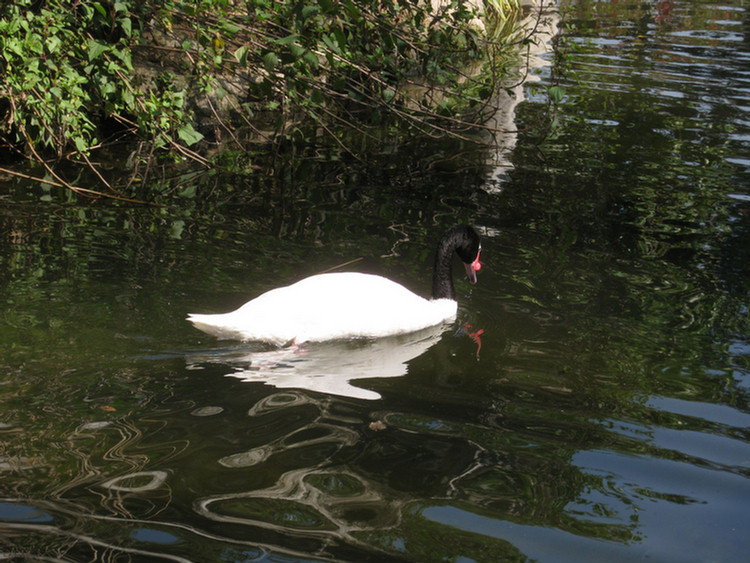
Black necked swan
Flamingo's are So Colorful
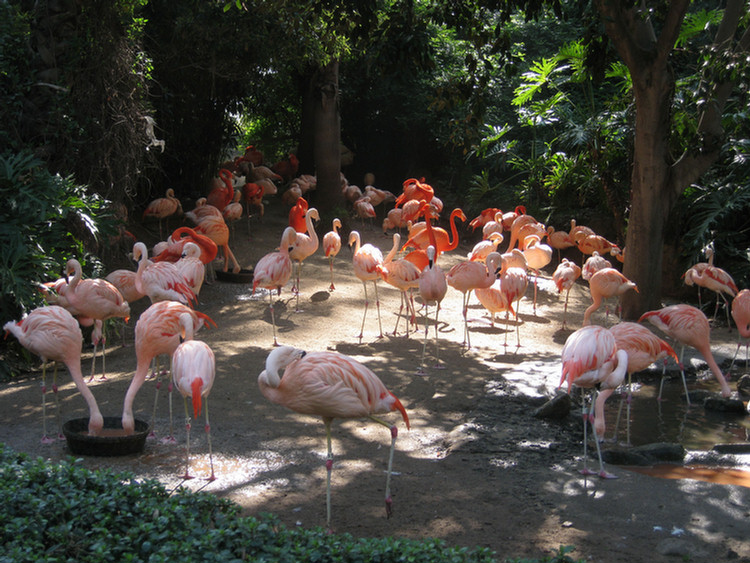
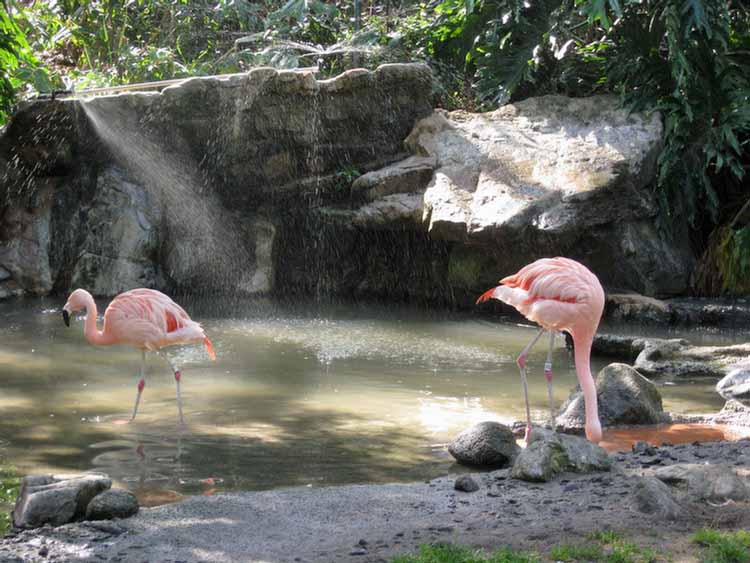
Did you know? - Flamingos filter-feed on brine shrimp and blue-green algae. Their oddly-shaped beaks are specially adapted to separate mud and silt from the food they eat, and are uniquely used upside-down. The filtering of food items is assisted by hairy structures called lamellae which line the mandibles, and the large rough-surfaced tongue. The pink or reddish color of flamingos comes from carotenoid proteins in their diet of animal and plant plankton. These proteins are broken down into pigments by liver enzymes.
The source of this varies by species, and effects the saturation of color. Flamingos whose sole diet is blue-green algae are darker in color compared to those who get it second hand (e.g. from animals that have digested blue-green aglae). Zoo-fed flamingos, who often lack the color enhancer in their diet, may be given food with the additive canthaxanthin.
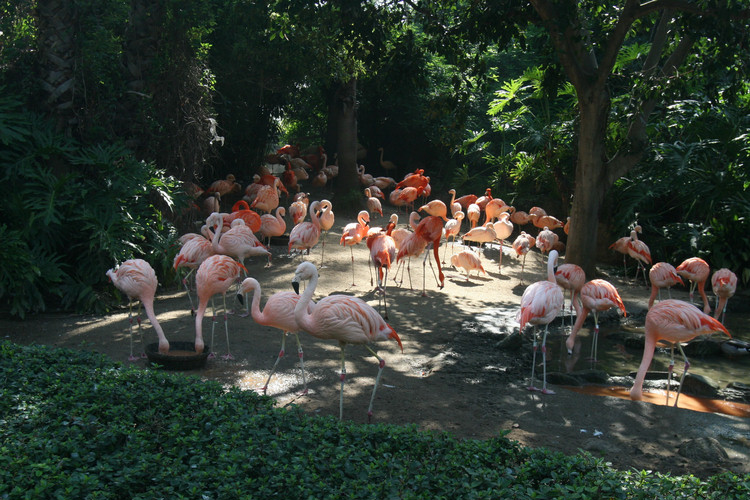
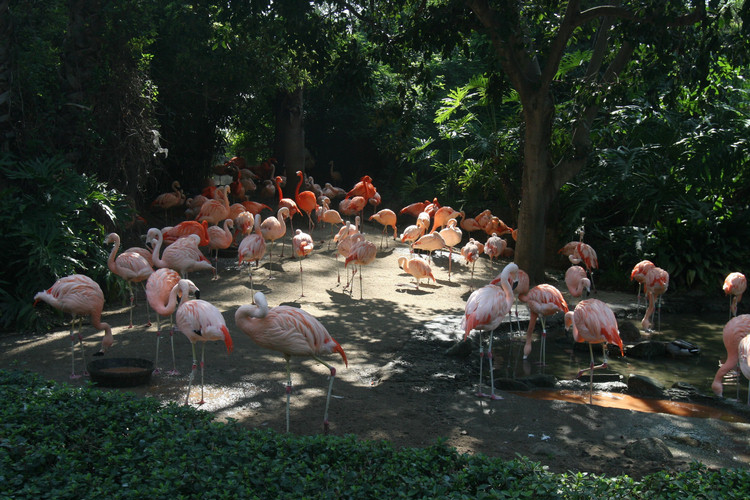
Did you know? - Flamingos often stand on one leg, the other tucked beneath the body. The reason for this behavior is not fully understood. Some suggest that the flamingo, like some other animals, has the ability to have half of its body go into a state of sleep, and when one side is rested, the flamingo will swap leg and then let the other half sleep,[citation needed] but this has not been proven. Recent research has indicated that standing on one leg may allow the birds to conserve more body heat, given they spend a significant amount of time wading in cold water. As well as standing in the water, flamingos may stamp their webbed feet in the mud to stir up food from the bottom.
We Were Smart And Took The Tram To The Top

The Zoo is very large requiring a map
- Click for full sized map



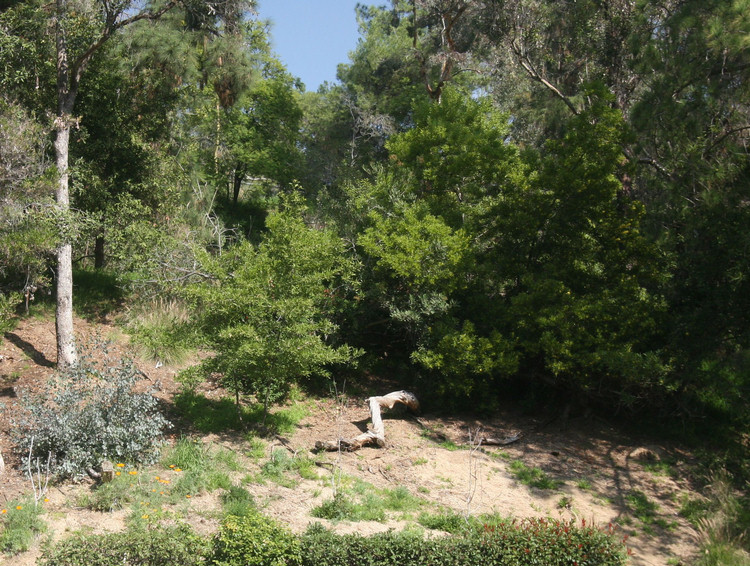
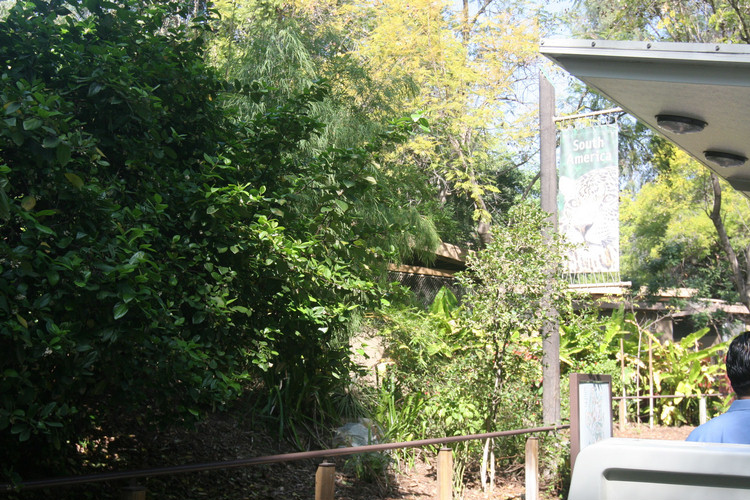
We stopped at the top and went right
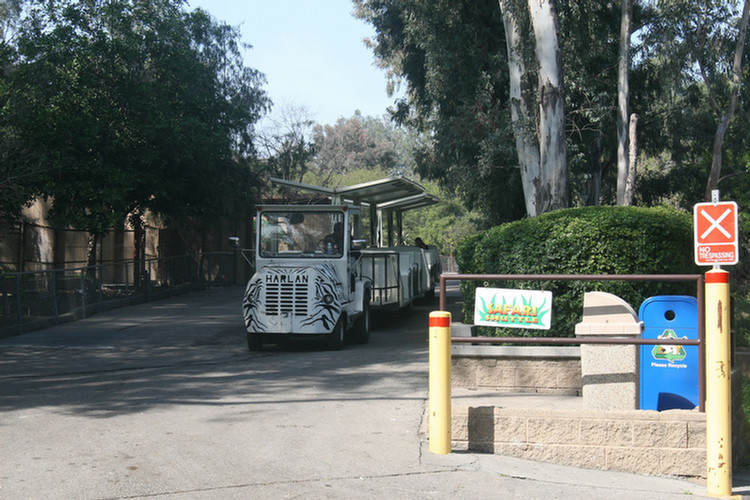
The top
The Animals Were Very Interesting
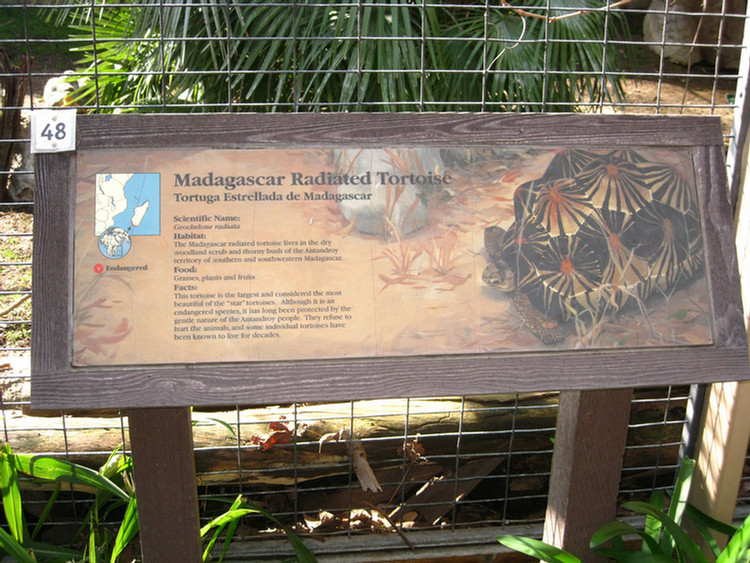

Did you know? - The radiated tortoise (Astrochelys radiata) is a species in the genus of the Astrochelys tortoises. It is fairly large and considered by many to be one of the most beautiful tortoises in the world. Although this species is native to Southern Madagascar and mainly only found there, it can be found in the rest of this country and has been introduced to the islands of Réunion and Mauritius.
As the Radiated Tortoises are herbivores, grazing constitutes 80-90% of their diet, while they also eat fruits and succulent plants. . A favorite food in the wild is the Opuntia cactus. They are known to graze regularly in the same area, thus keeping the vegetation in that area closely trimmed.
They seem to prefer new growth rather than mature growth because of the high-protein, low-fiber content. These tortoises are, however, endangered, mainly because of the destruction of their habitat by humans and because of poaching.

Animals Come In All Colors
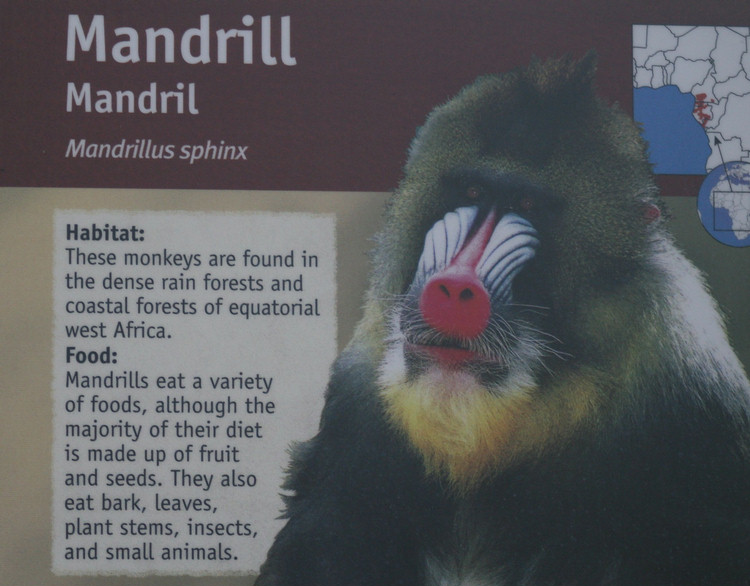

Very pretty fellow
Did you know? - The Mandrill is recognized by its olive-colored fur and the colorful face and rump of males, a coloration that grows stronger with sexual maturity; females have duller colors. This coloration becomes more pronounced as the monkey becomes excited and is likely to be an example of sexual selection. The coloration on the rump is thought to enhance visibility in the thick vegetation of the rainforest and aids in group movement.
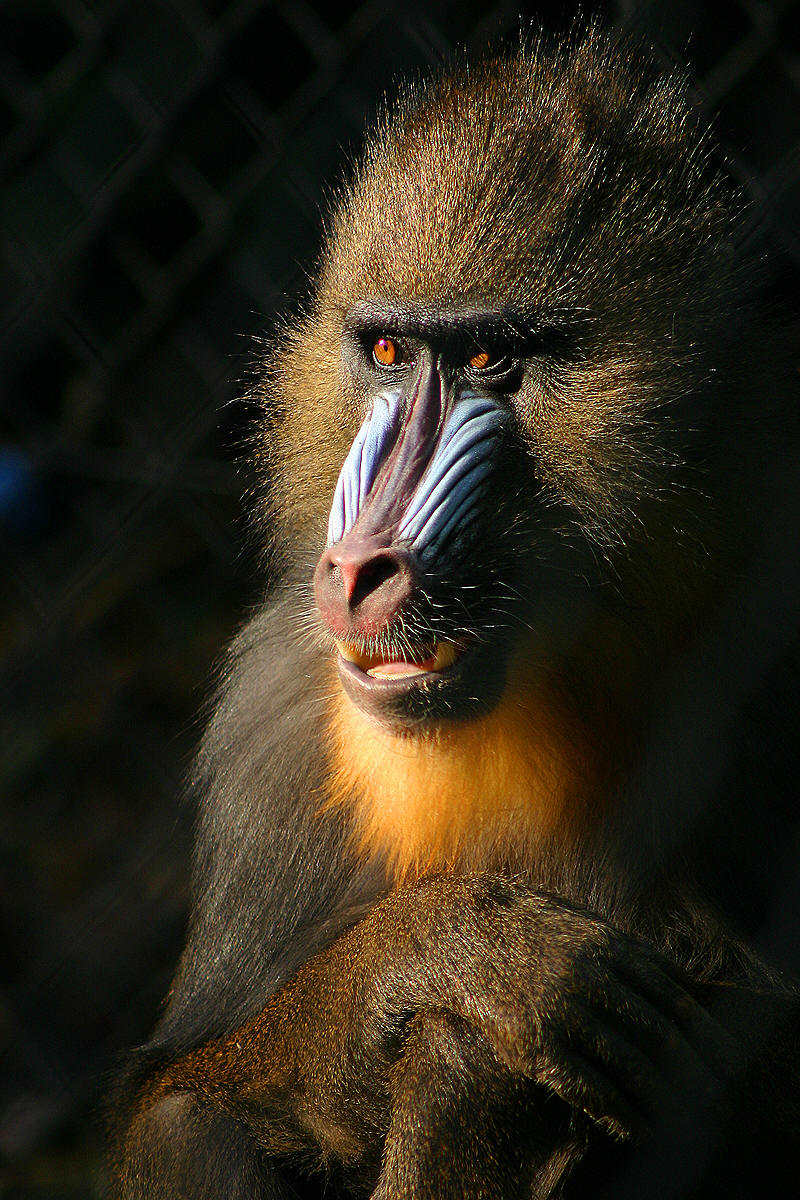

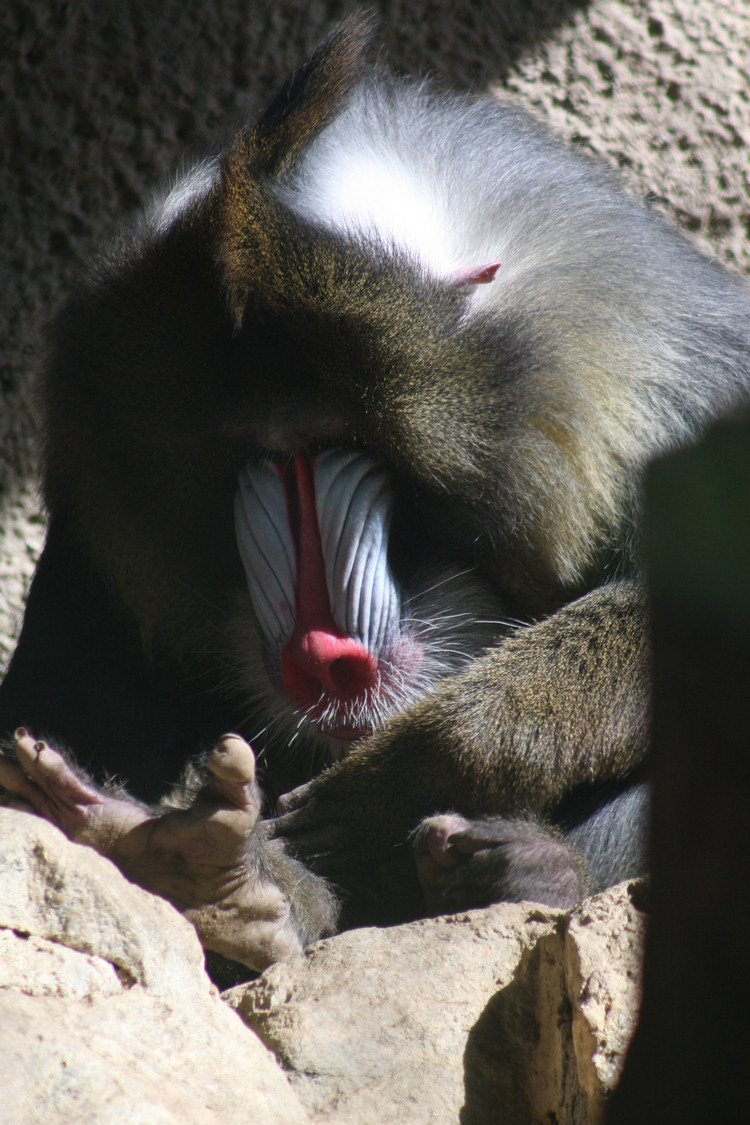
Mandrills are social animals and live in large groups, primarily including females and young and led by a single dominant male.
The Giraffes Were Fascinating
Did you know? - The giraffe (Giraffa camelopardalis) is an African even-toed ungulate mammal, the tallest of all land-living animal species, and the largest ruminant. It is covered in large, irregular patches of yellow to black fur separated by white, off-white, or dark yellowish brown background. The average mass for an adult male giraffe is 1,200 kilograms (2,600 lb) while the average mass for an adult female is 830 kilograms (1,800 lb). It is approximately 4.3 metres (14 ft) to 5.2 metres (17 ft) tall, although the tallest male recorded stood almost 6 metres (20 ft)
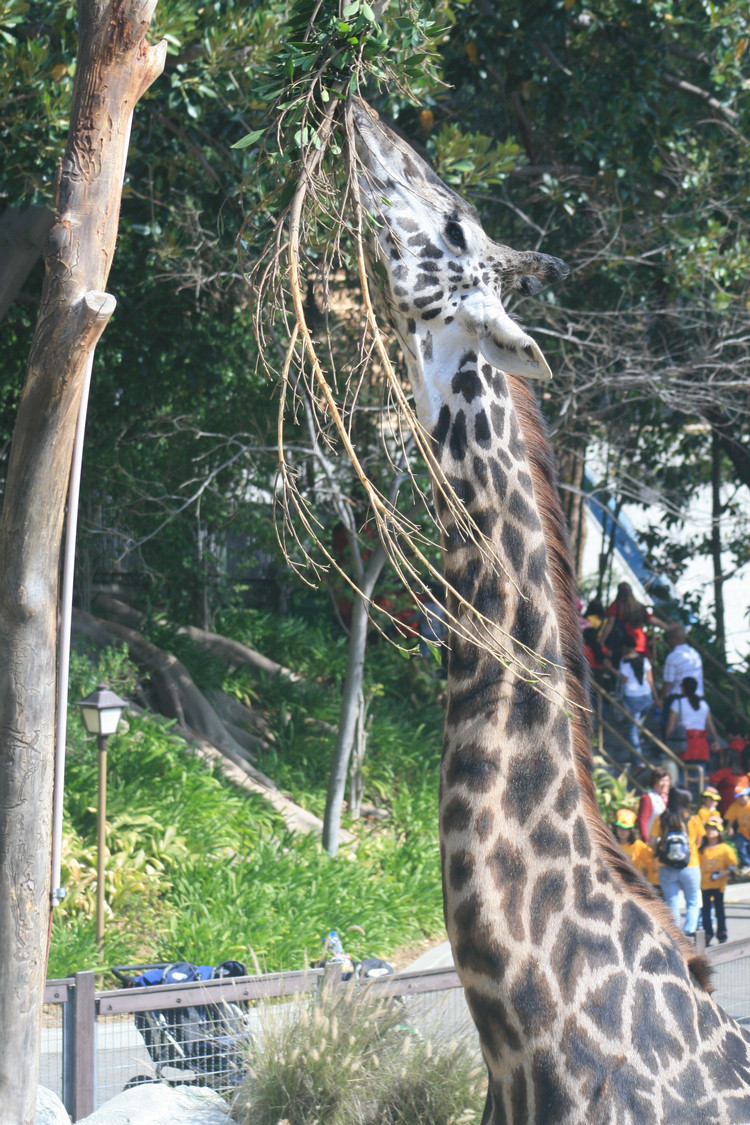

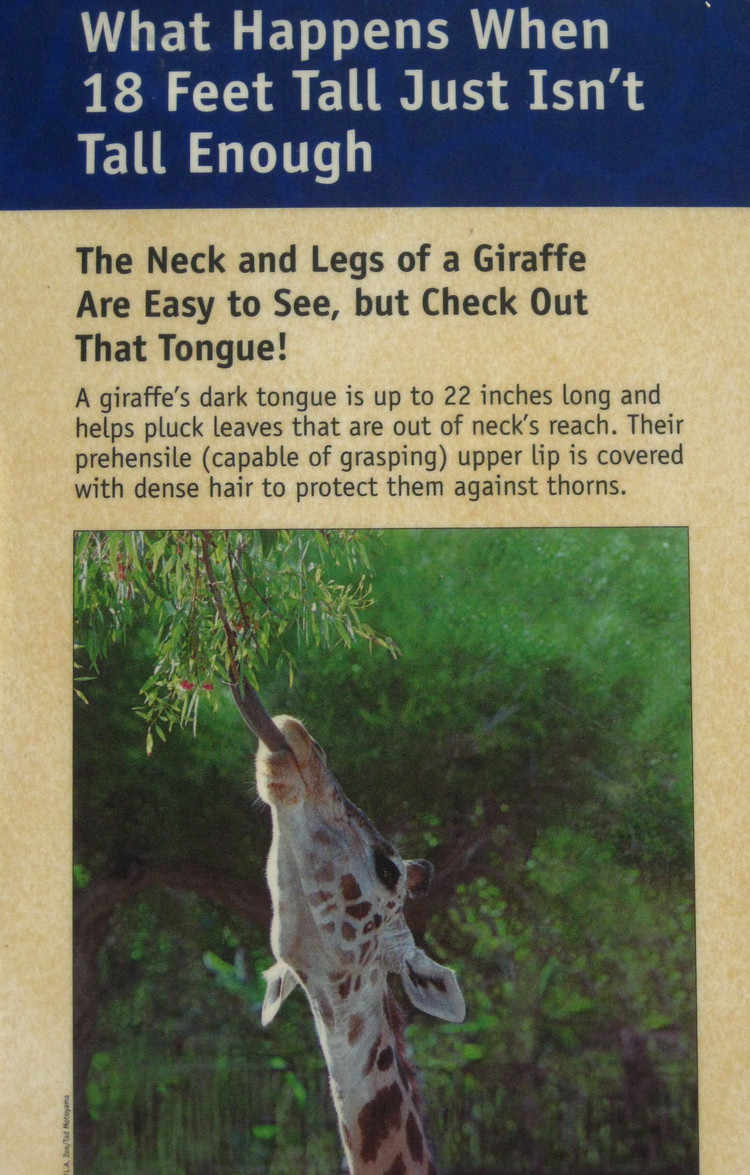

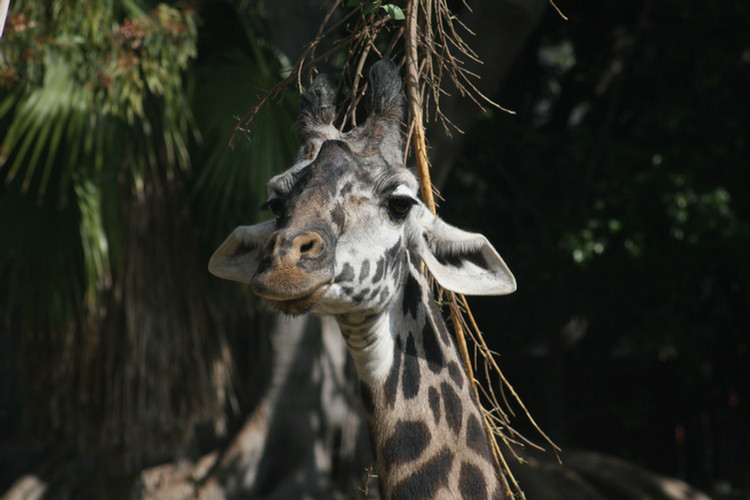
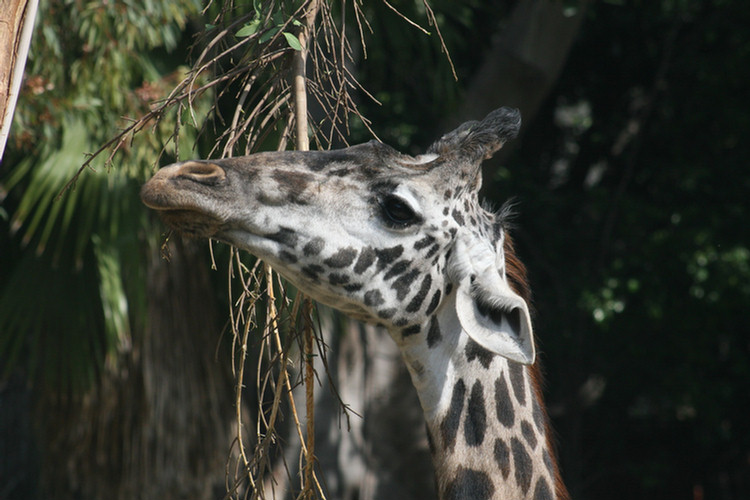
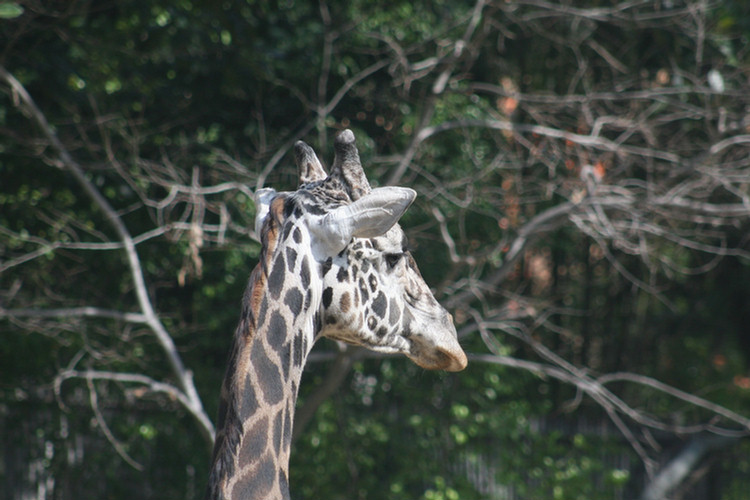
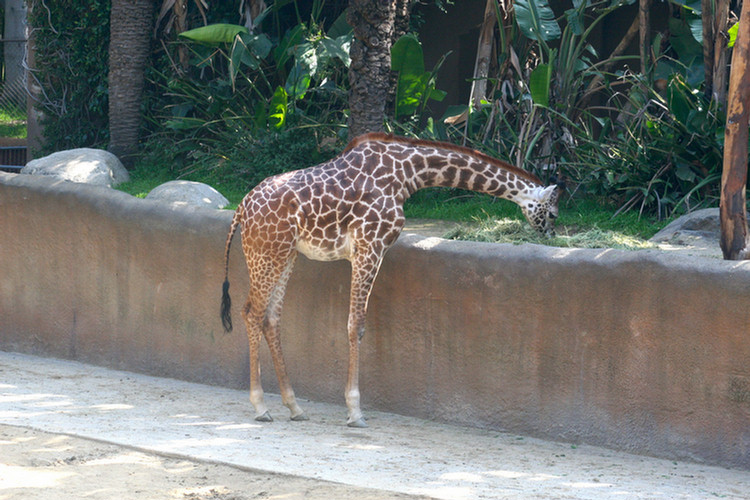
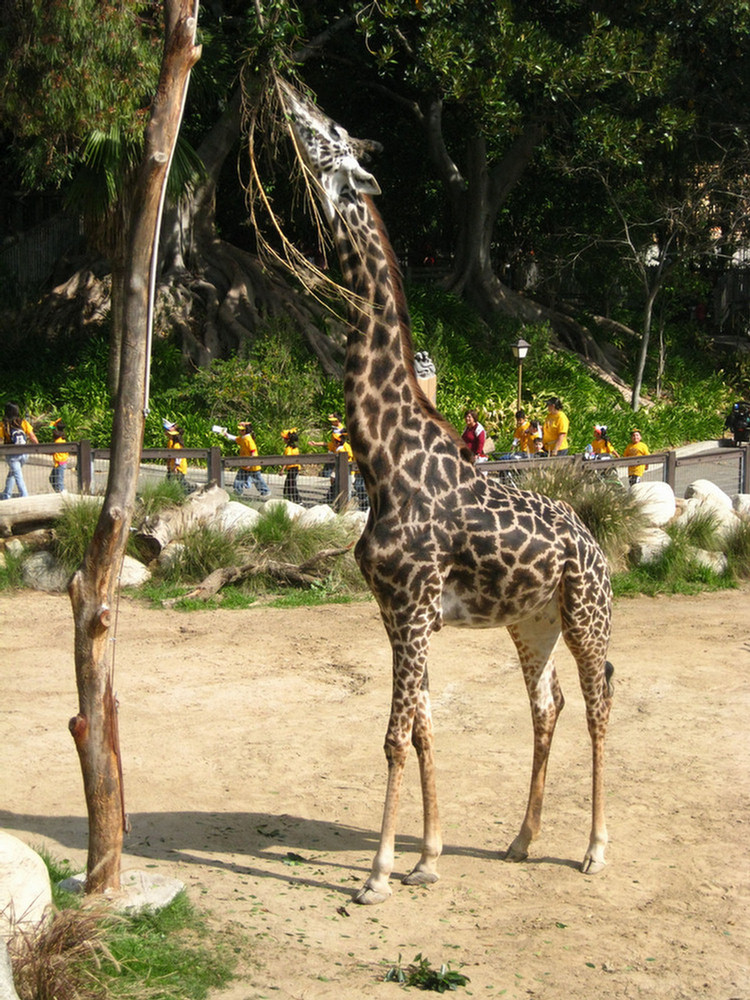
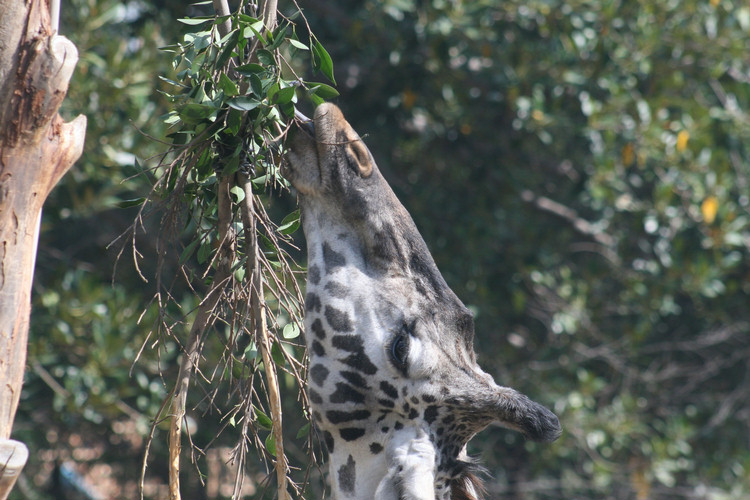
Did you know? - Both sexes have horns, although the horns of a female are smaller. The prominent horns are formed from ossified cartilage, and are called ossicones. The appearance of horns is a reliable method of identifying the sex of giraffes, with the females displaying tufts of hair on the top of the horns, whereas males' horns tend to be bald on top — an effect of necking in combat. Males sometimes develop calcium deposits which form bumps on their skull as they age, which can give the appearance of up to three additional horns.
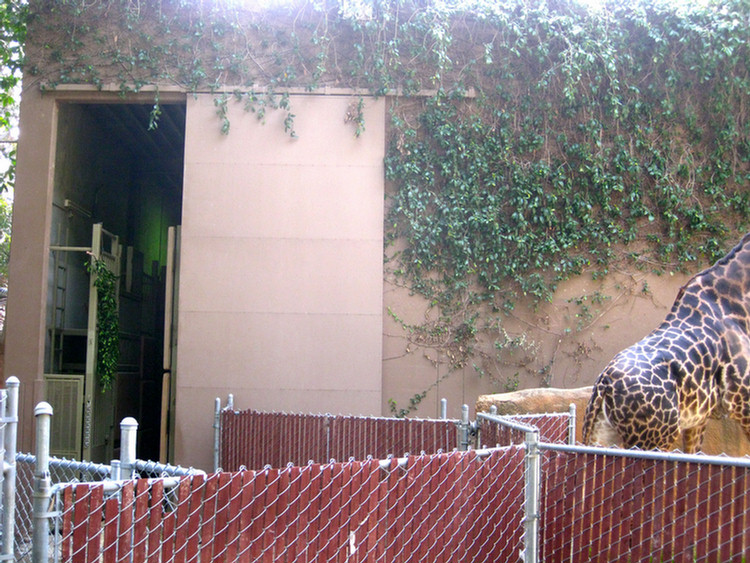
Giraffe's require big tall doors so they can rest at night

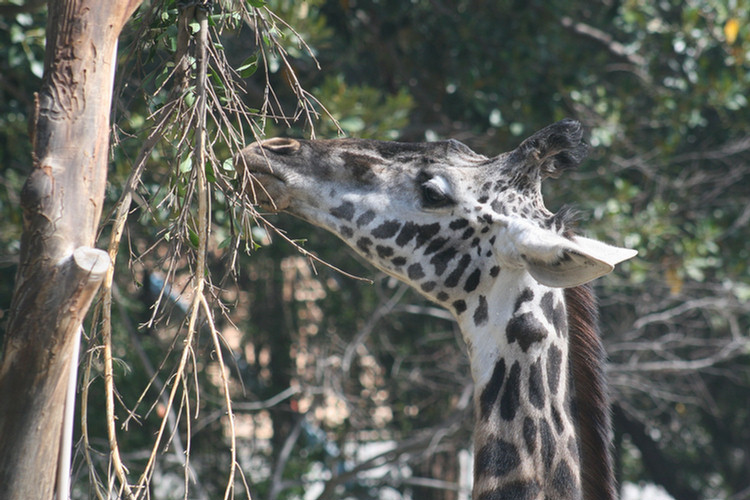
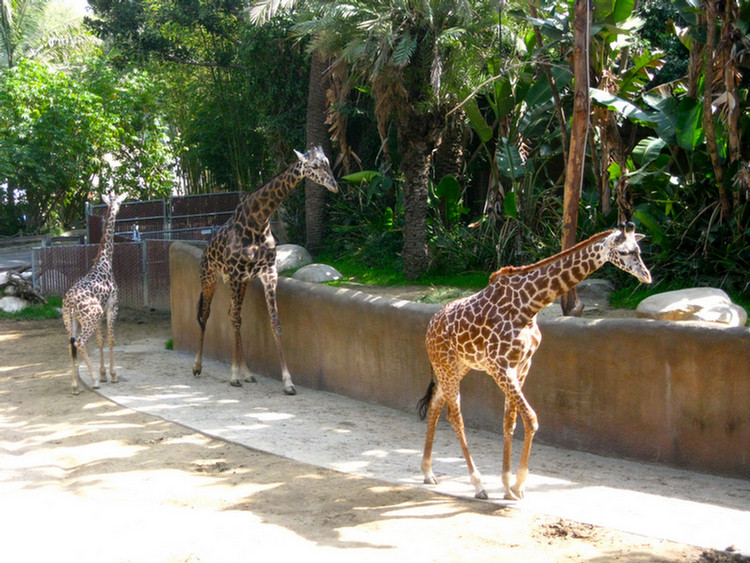
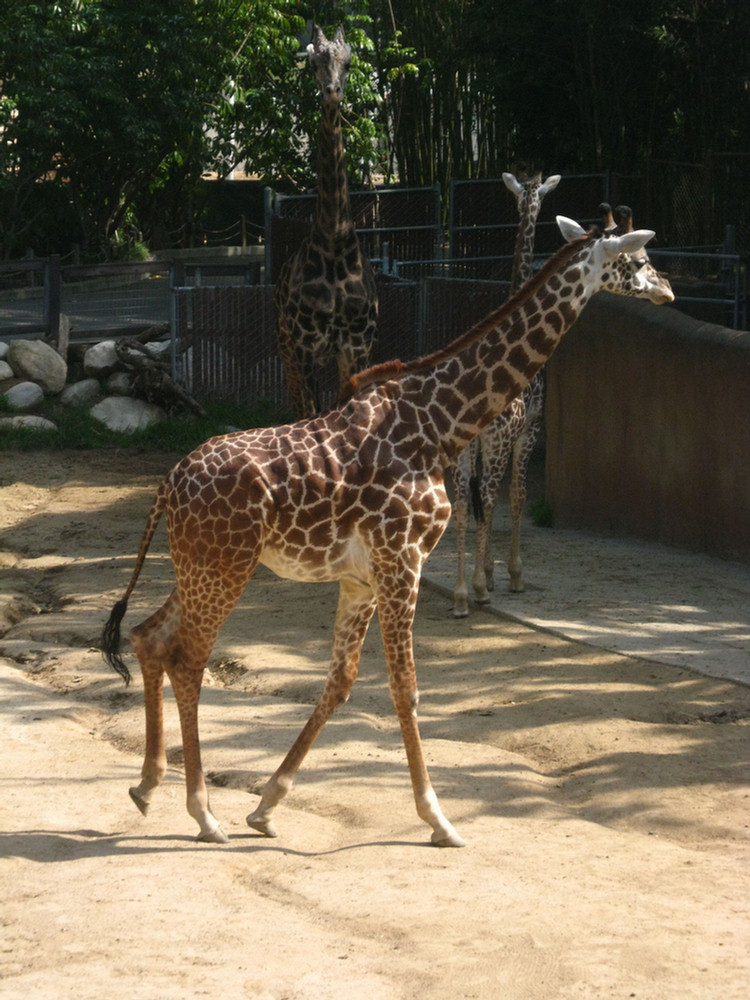
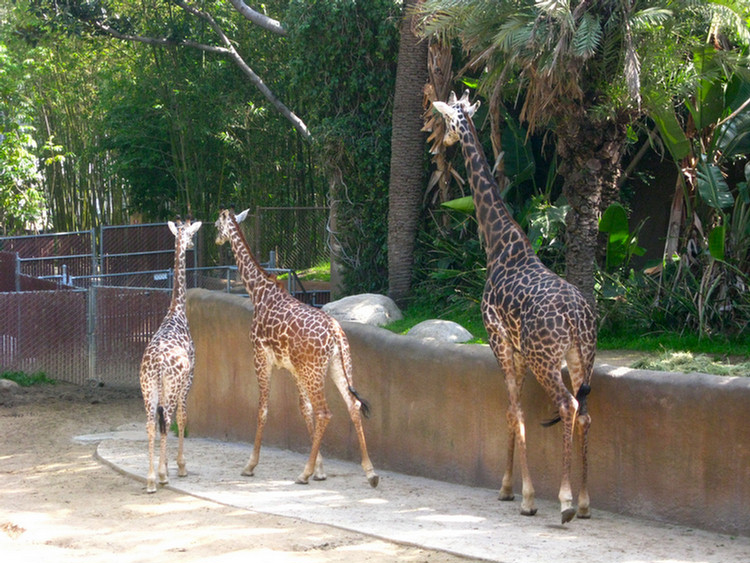
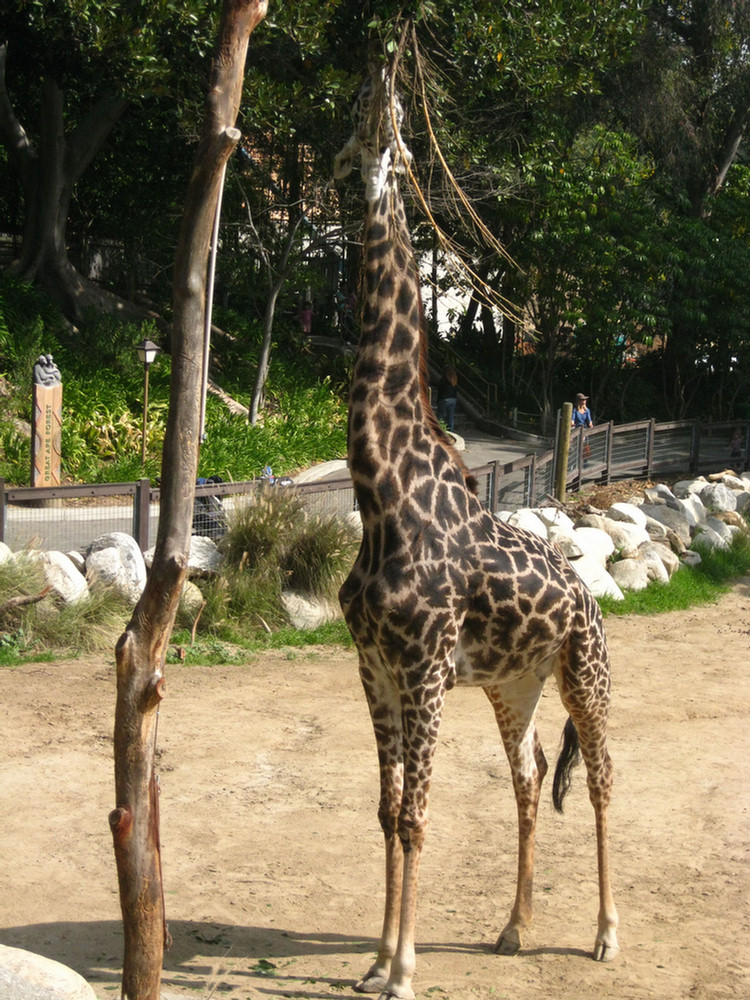
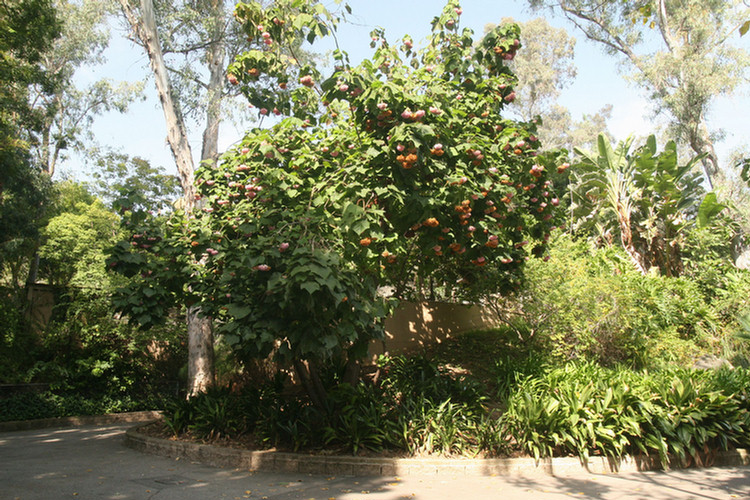
The Zoo is also an official arboretum
Did you know? - An arboretum is a collection of trees. Related collections include a fruticetum (from the Latin frutex, meaning shrub), and a viticetum, a collection of vines. More commonly today, an arboretum is a botanical garden containing living collections of woody plants intended at least partly for scientific study.
The first arboretum was the Arboretum Trsteno, near Dubrovnik in Croatia. The date of its founding is unknown, but it was already in existence by 1492, when a 15 m (50 ft) span aqueduct to irrigate the arboretum was constructed; this aqueduct is still in use. It was created by the prominent local Gučetić/Gozze family. It suffered two major disasters in the 1990s but its two unique and ancient Oriental Planes remained standing.
The Lions and Tigers Sleep Today

Two words... Knocked Out!


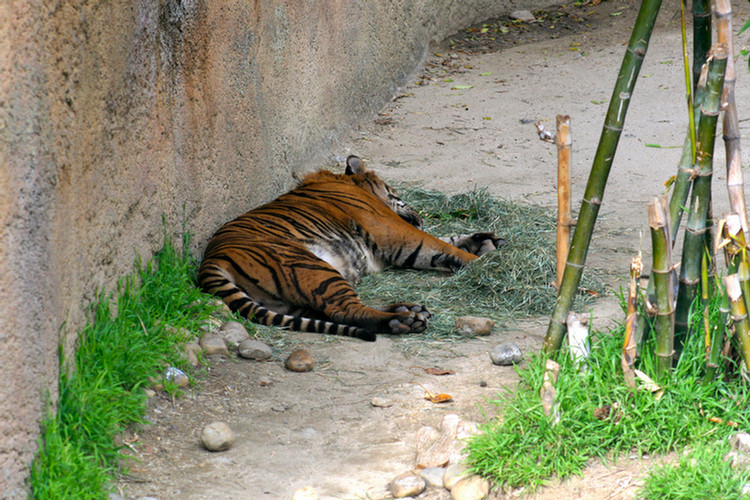
The Lemurs Were Delightful
Did you know? - The term "lemur" is derived from the Latin word lemures, meaning "spirits of the night" or "haunter". This likely refers to their large, reflective eyes and the wailing cries of some species (the Indri in particular). The term is generically used for the members of the five lemuriform families, but it is also the genus of one of the lemuriform species, the Ring-tailed Lemur (Lemur catta). The two so-called flying lemur species, known formally as colugos, are not lemurs or even primates.
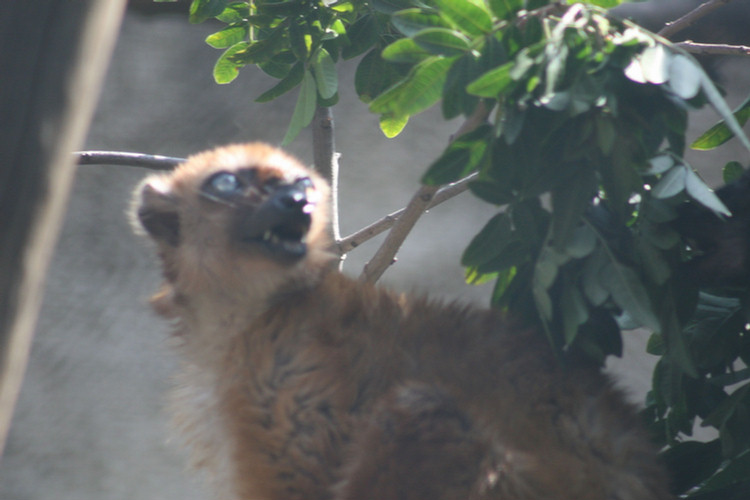
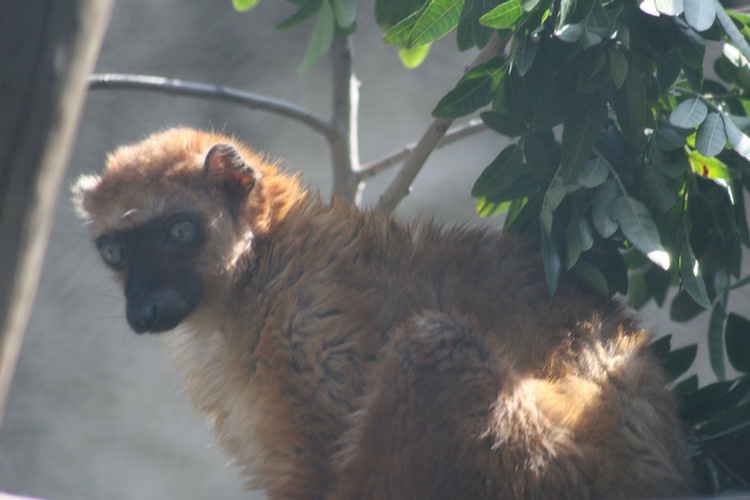
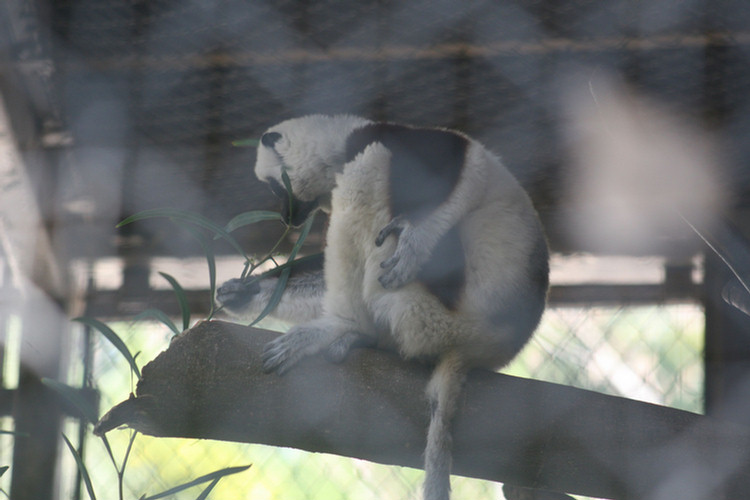

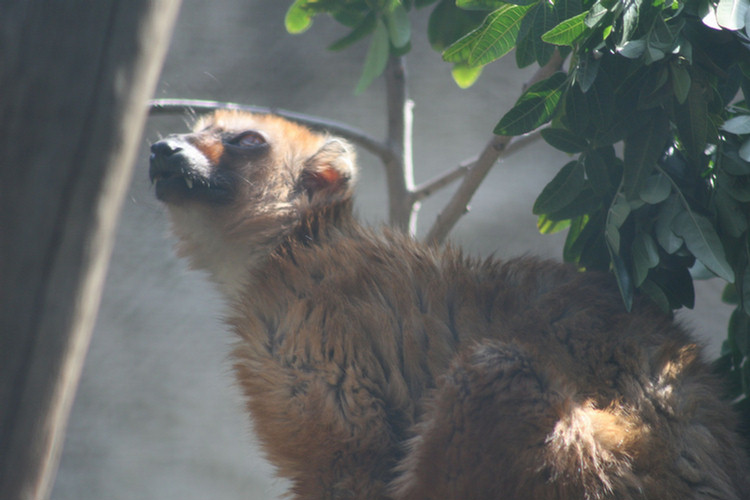
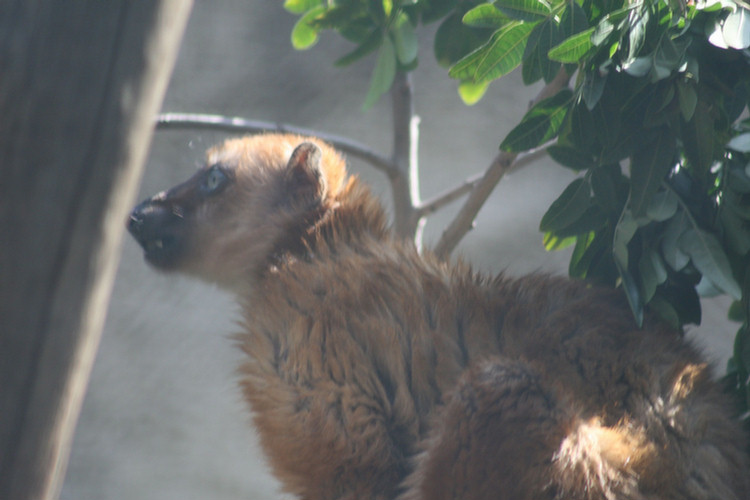
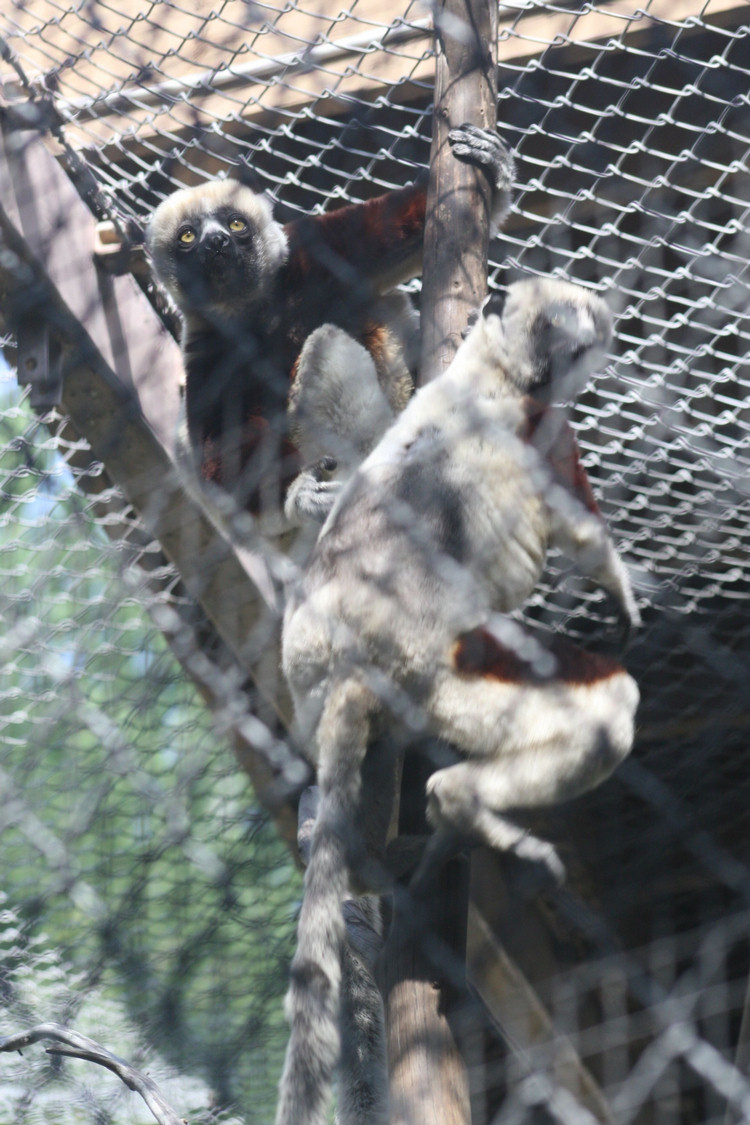
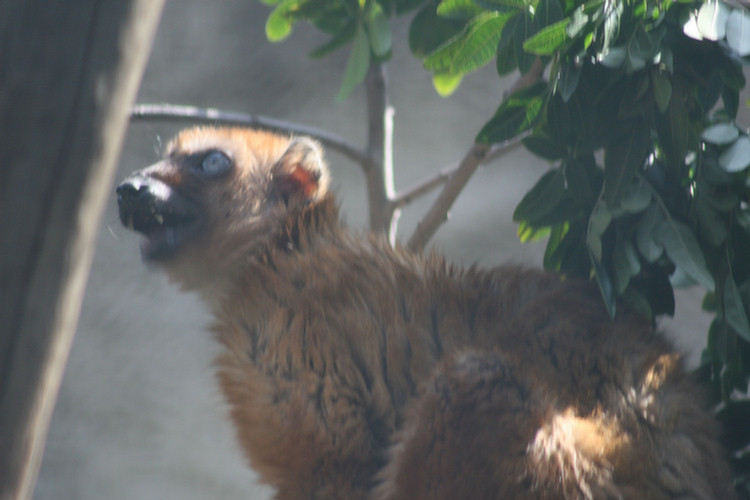
Lots Of Construction Going On

New Elephant area under construction
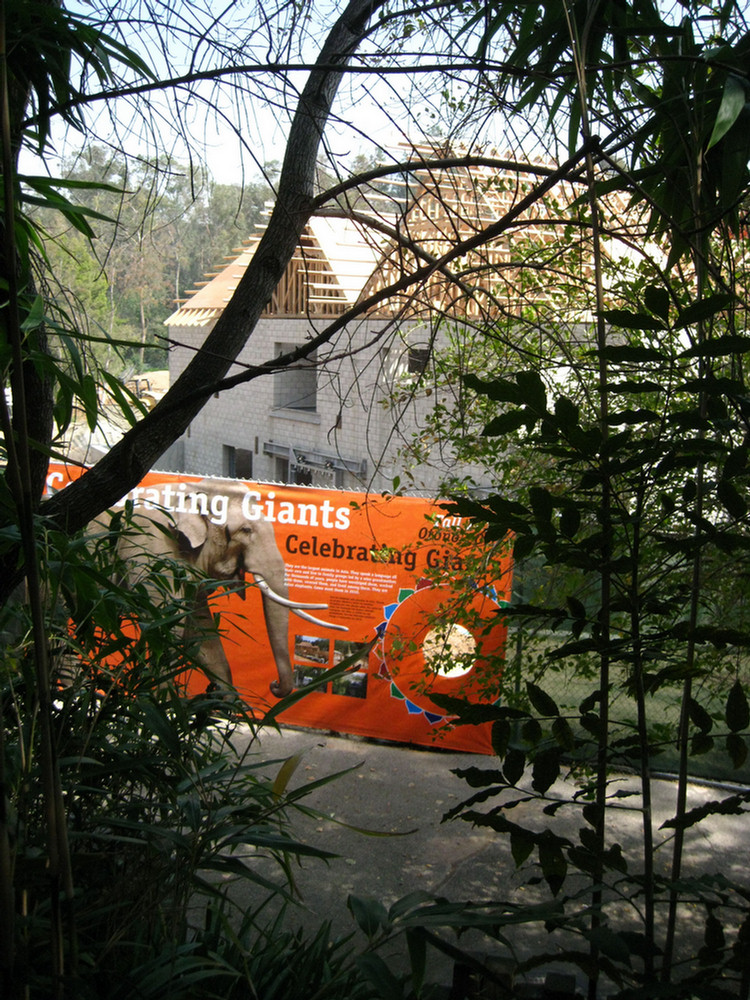

They are getting a new home

Bamboo
Did you know? - Bamboo is the fastest-growing known plant on Earth; it has been measured surging skyward as fast as 121 cm (48 in) in a 24-hour period, and can also reach maximal growth rate exceeding one meter (39 inches) per hour for short periods of time. Many prehistoric bamboos exceeded heights of 85 metres (280 ft). Primarily growing in regions of warmer climates during the Cretaceous period, vast fields existed in what is now Asia.
Unlike trees, all bamboo has the potential to grow to full height and girth in a single growing season of 3–4 months. During this first season, the clump of young shoots grow vertically, with no branching. In the next year, the pulpy wall of each culm slowly dries and hardens. The culm begins to sprout branches and leaves from each node. During the third year, the culm further hardens. The shoot is now considered a fully mature culm. Over the next 2–5 years (depending on species), fungus and mould begin to form on the outside of the culm, which eventually penetrate and overcome the culm. Around 5 – 8 years later (species and climate dependent), the fungal and mold growth cause the culm to collapse and decay. This brief life means culms are ready for harvest and suitable for use in construction within 3 – 7 years.
Bighorn Sheep
Did you know? - The bighorn sheep originally crossed over the Bering land bridge from Siberia: the population in North America peaked in the millions, and the bighorn sheep entered into the mythology of Native Americans. However, by 1900 the population had crashed to several thousand. Conservation efforts (in part, by the Boy Scouts) have restored the population.

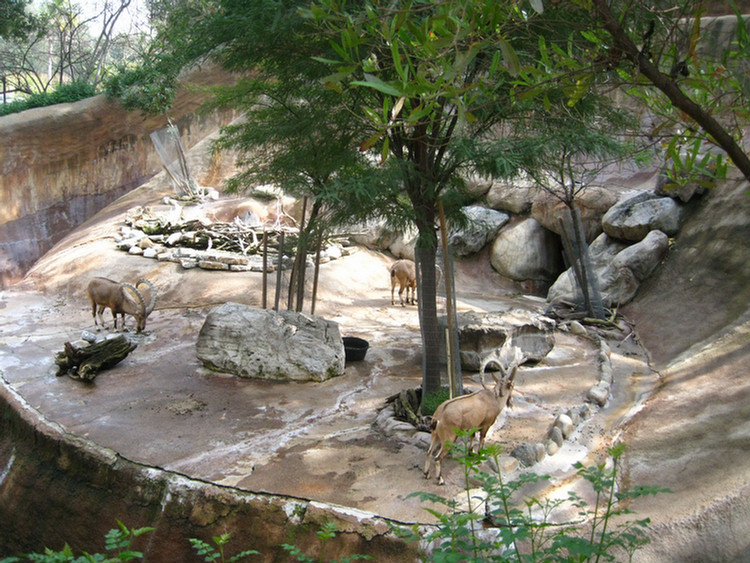
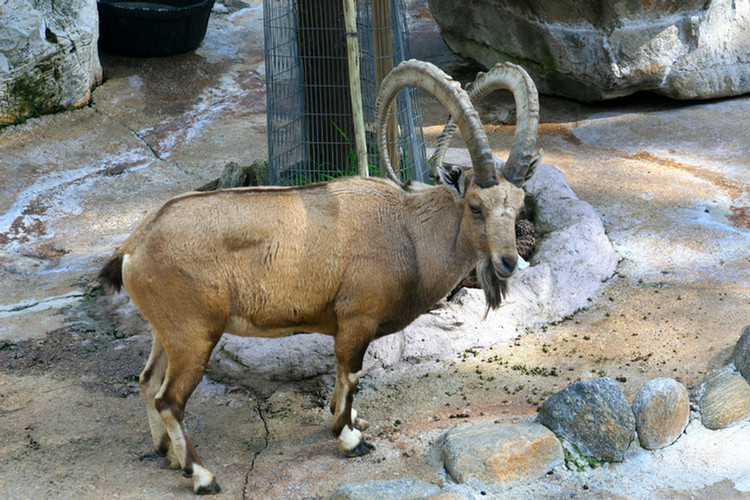


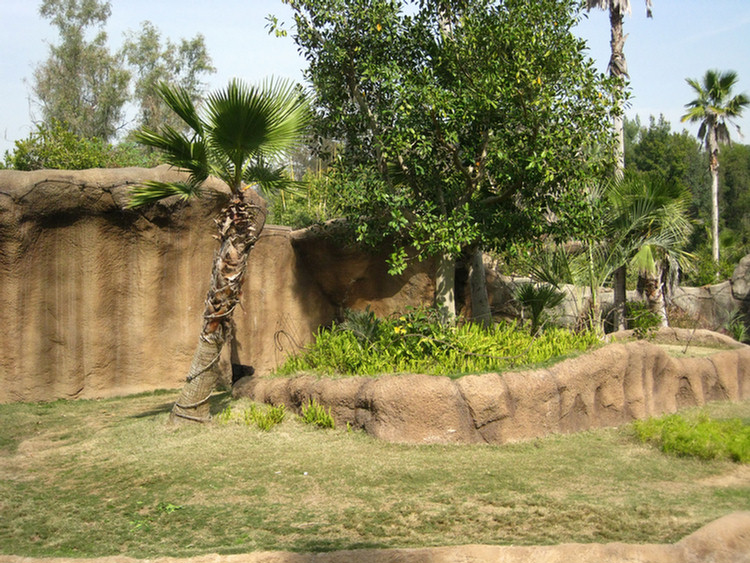
There is a gorilla here

The Zebras Were Relaxing
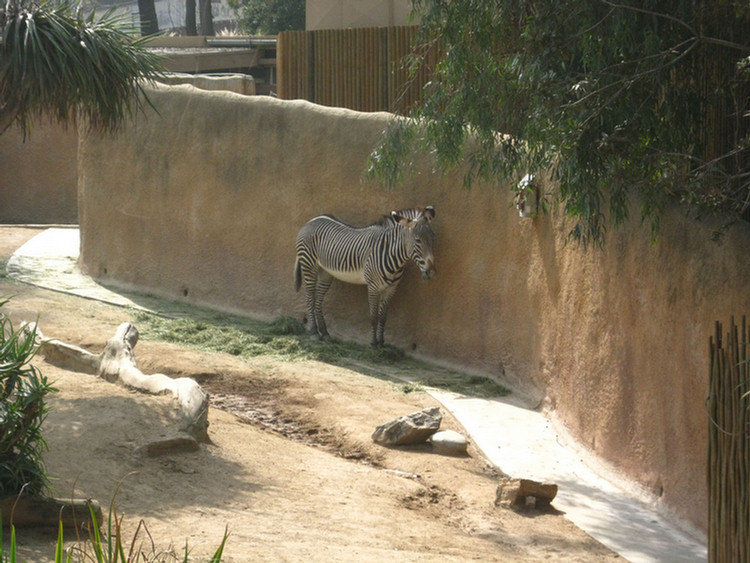
Did you know? - Zebras are African equids best known for their distinctive white and black stripes. Their stripes come in different patterns unique to each individual. They are generally social animals and can be seen in small harems to large herds. In addition to their stripes, zebras have erect, mohawk-like manes. Unlike their closest relatives, horses and asses, zebras have never been truly domesticated
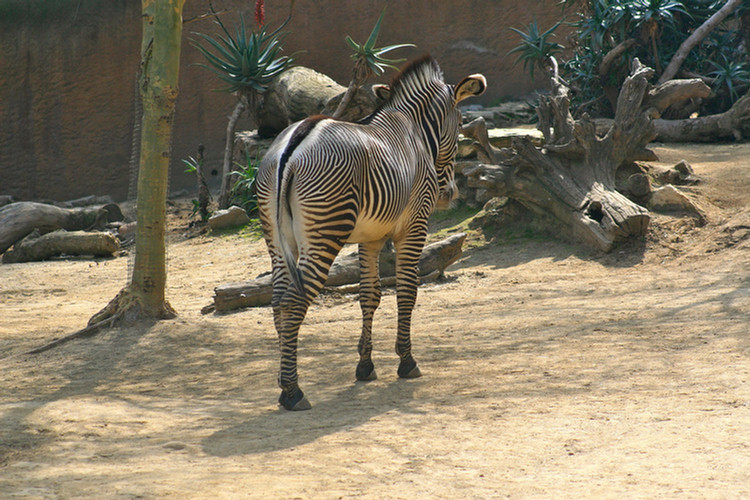
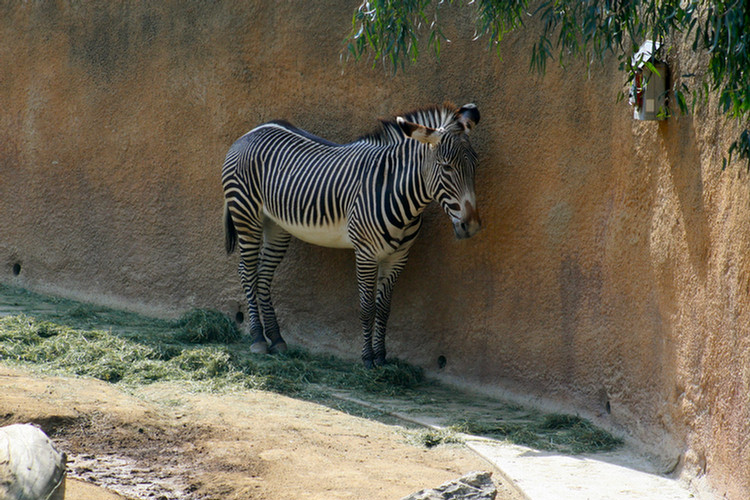
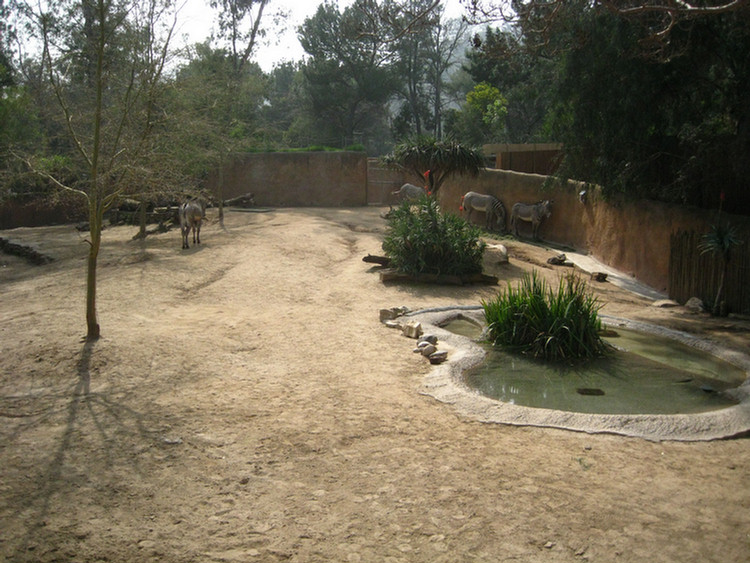
Did you know? - Zebras are very adaptable grazers. They feed mainly on grasses but will also eat shrubs, herbs, twigs, leaves and bark. Their well adapted digestive system allows them to subsist on diets of lower nutritional quality than that necessary for herbivores.
Desert Bighorn Sheep
Did you know? - The Desert Bighorn Sheep (Ovis canadensis nelsoni) is a subspecies of Bighorn Sheep that occurs in the desert Southwest regions of the United States and in the northern regions of Mexico. The trinomial of this species commemorates the American naturalist Edward William Nelson.The characteristics and behavior of Desert Bighorn Sheep generally follow those of other Bighorn Sheep, except for adaptation to the lack of water in the desert: bighorn sheep can go for extended periods of time without drinking water.


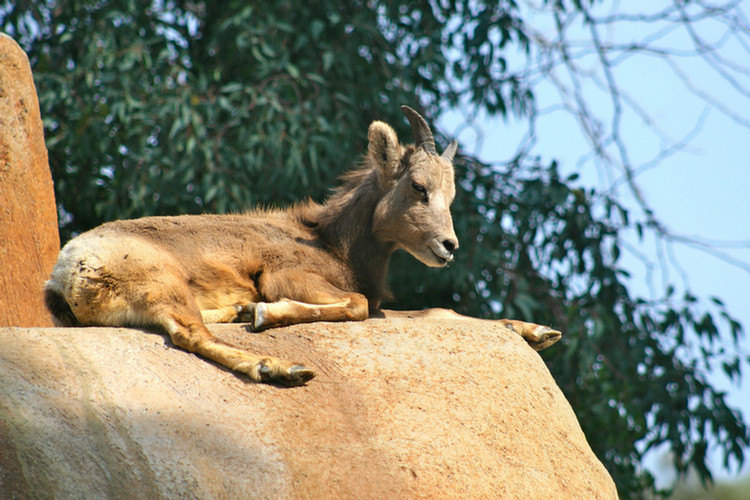
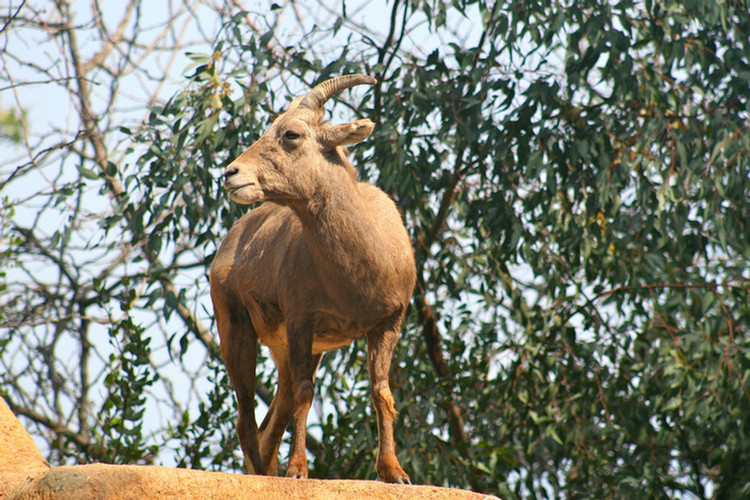
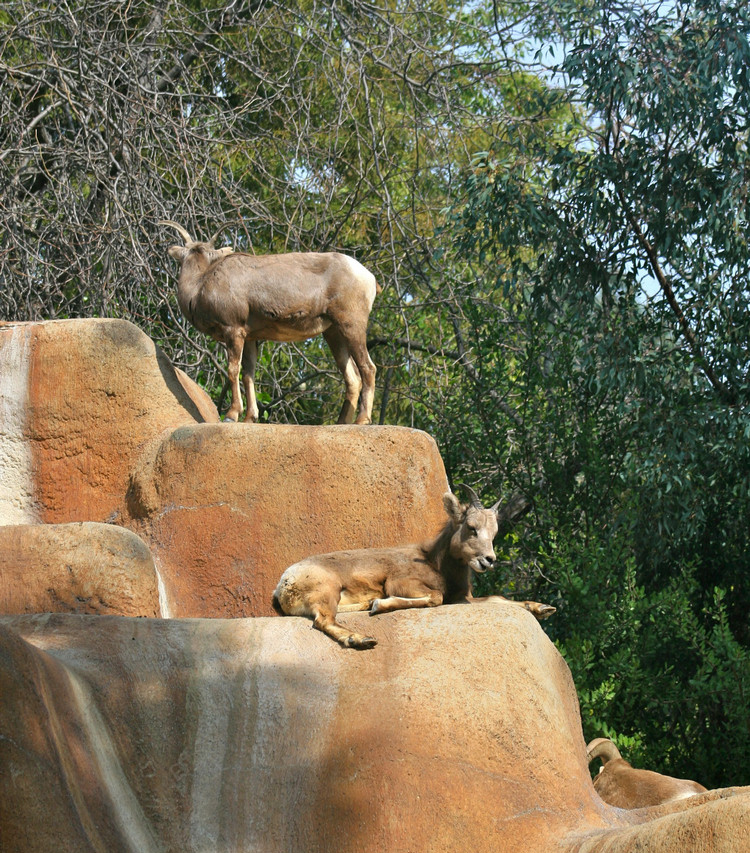
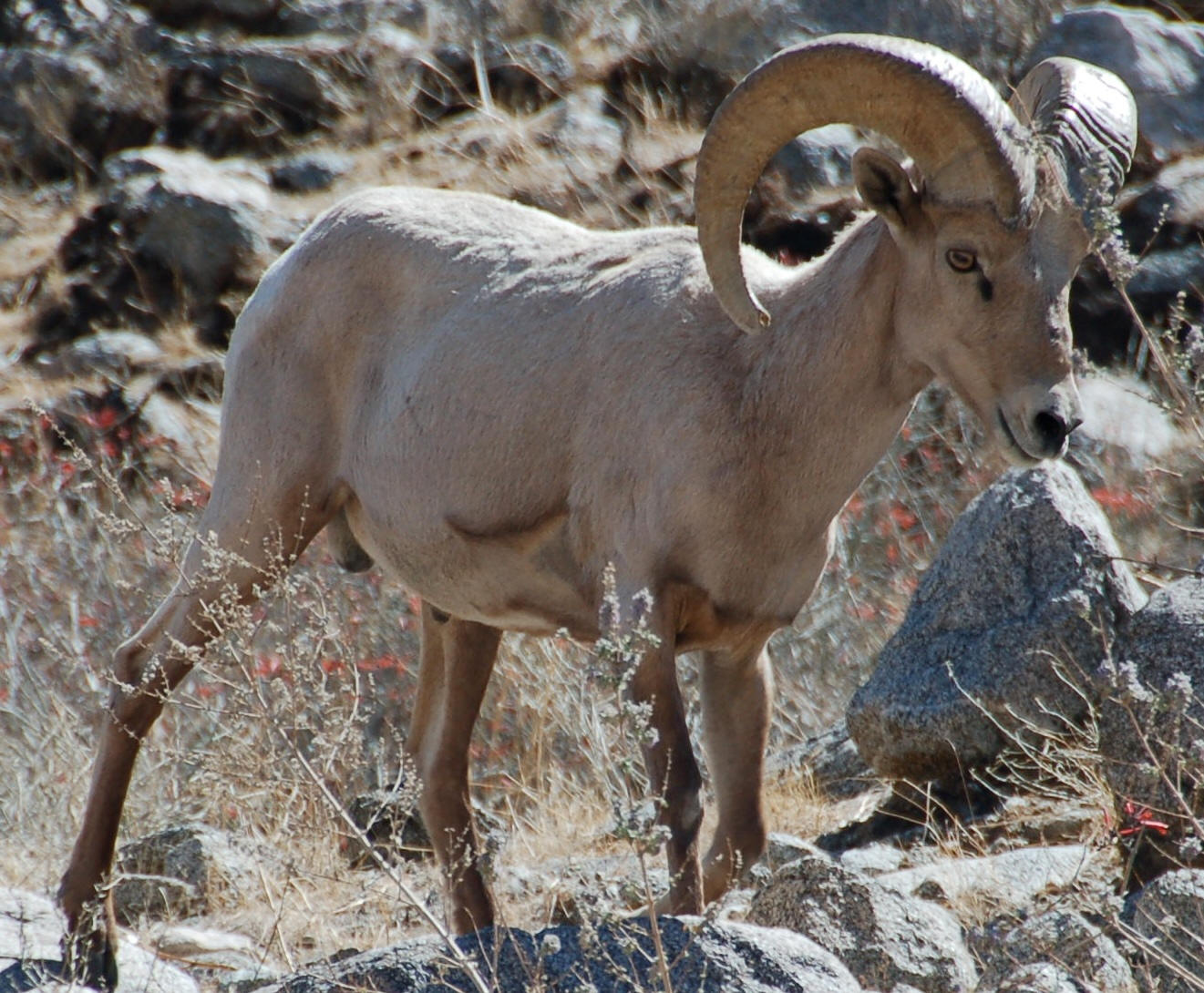
Anoa's
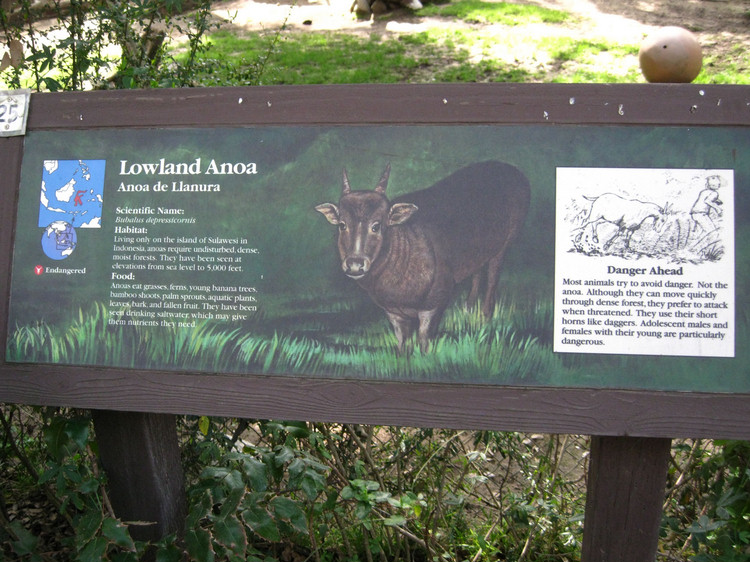
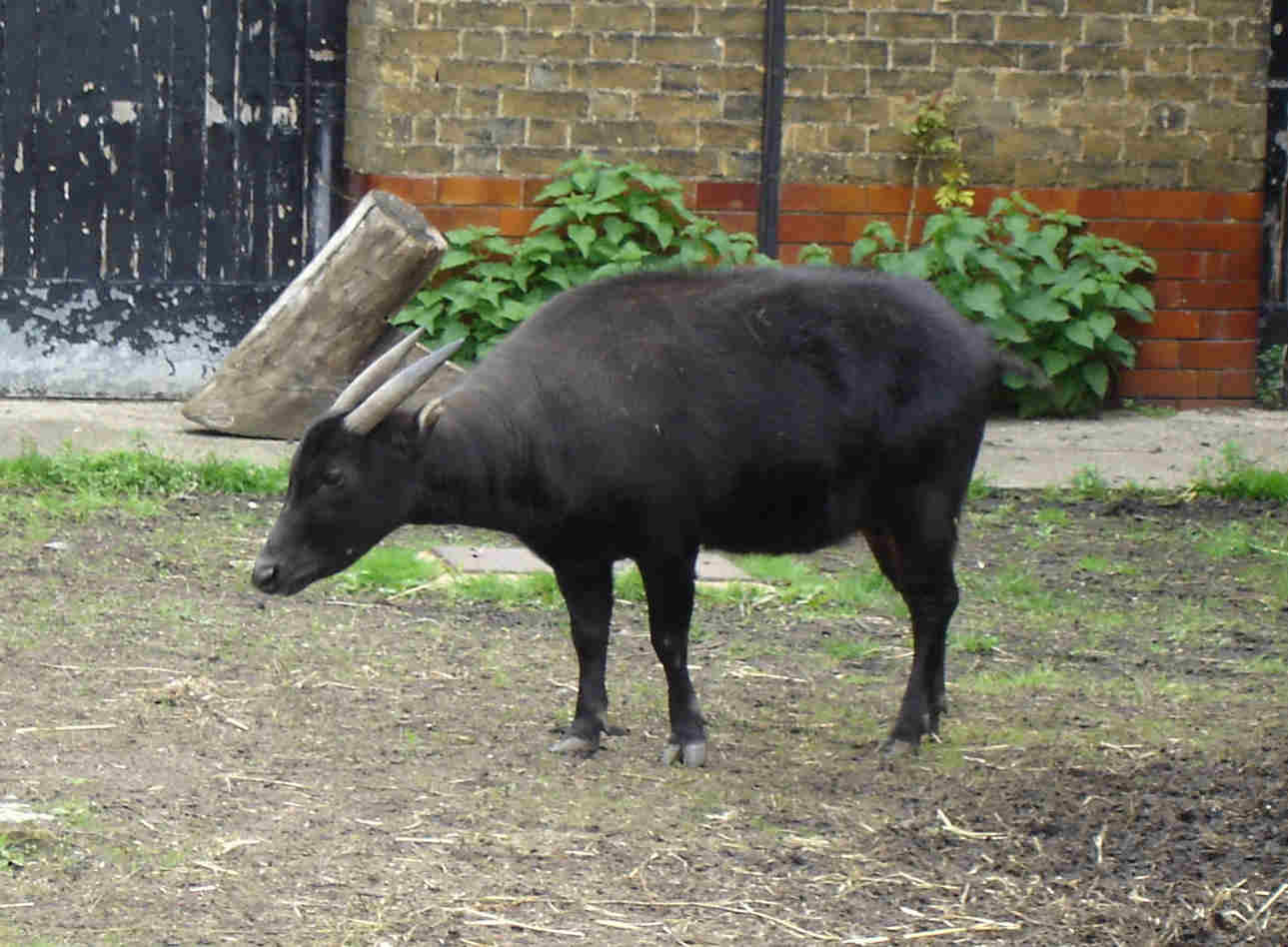

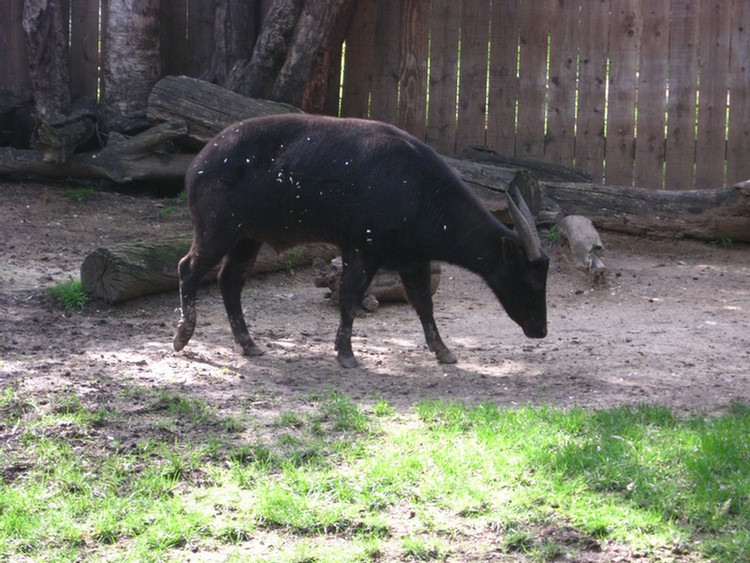
Babirusa's Were UGLY
